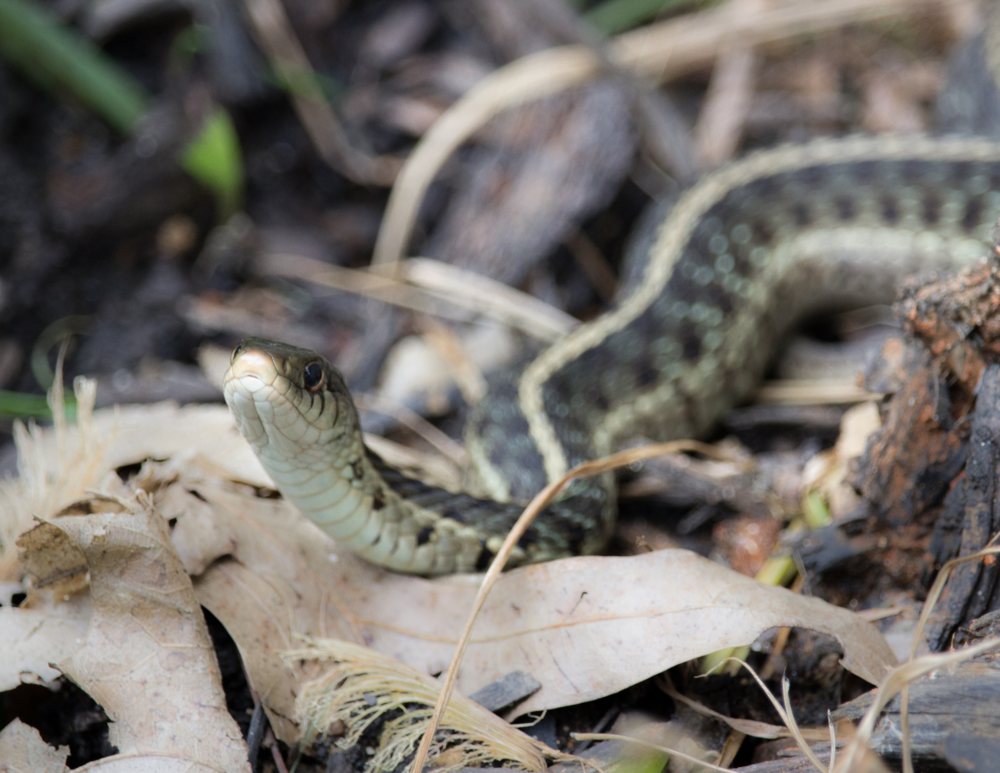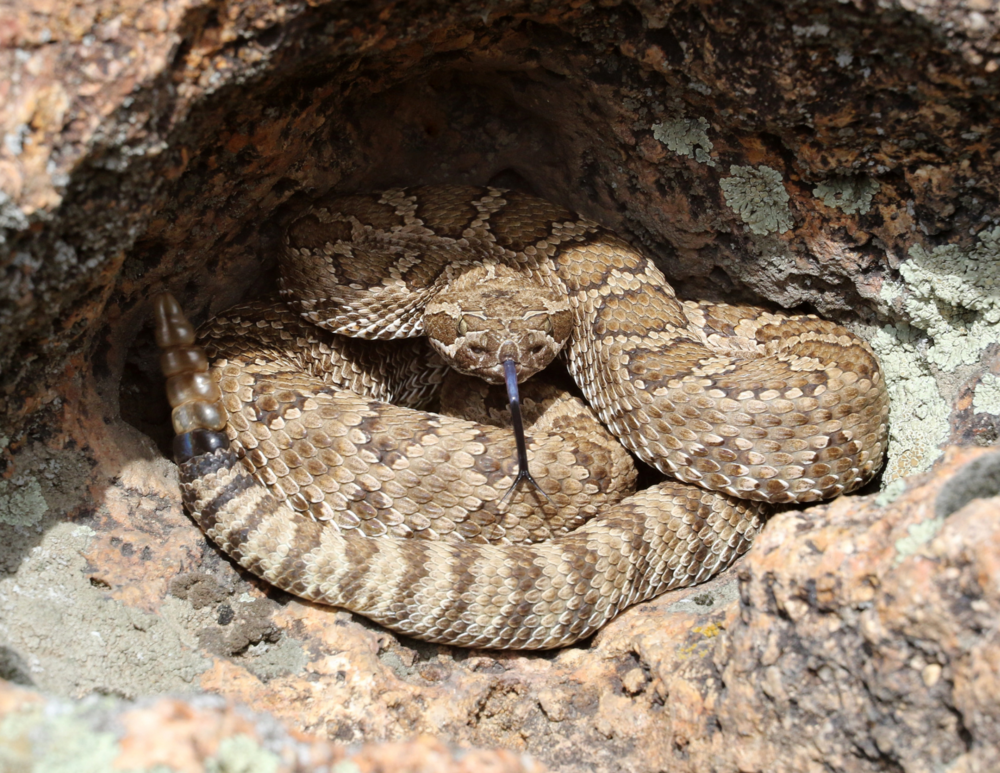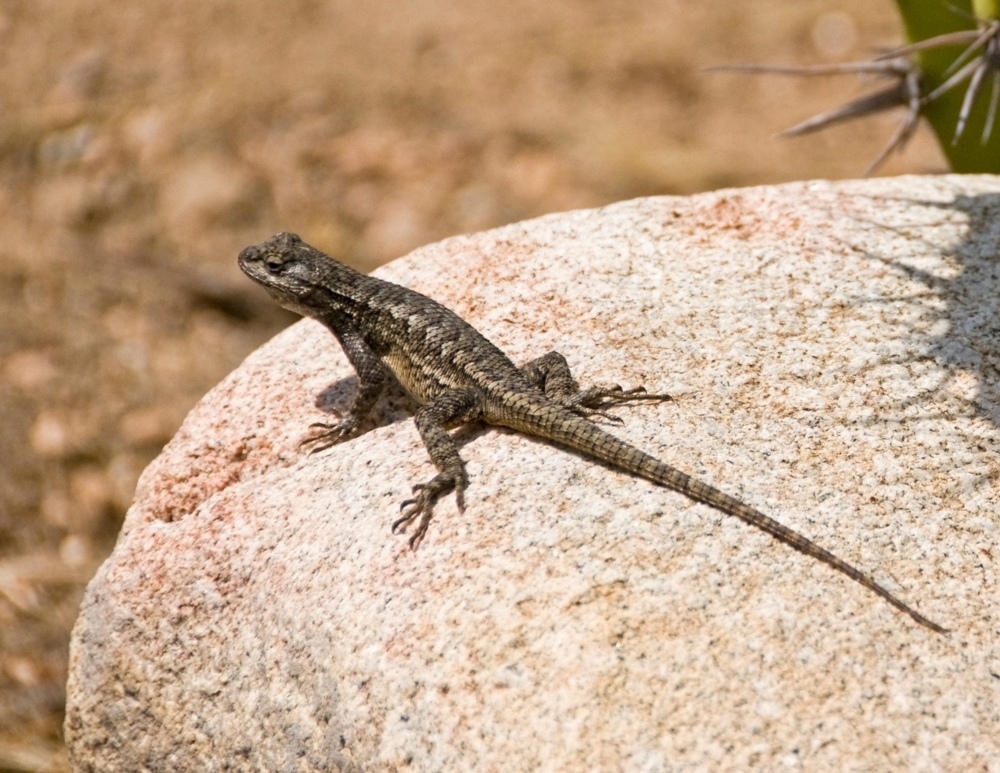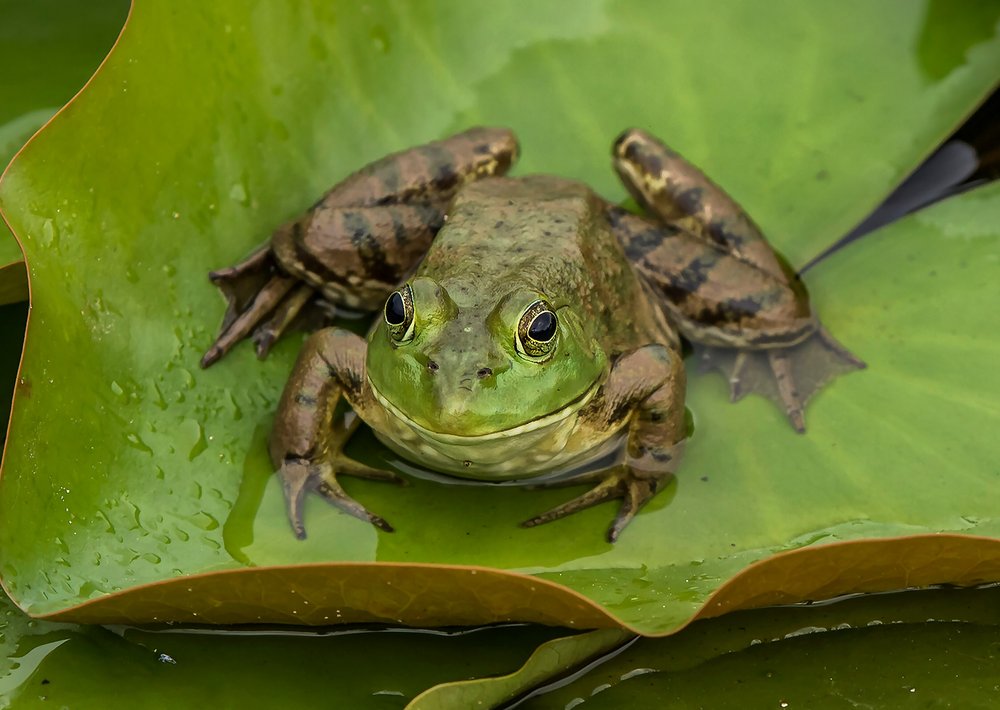Reptiles and Amphibians
Reptiles and amphibians are cold blooded animals. Cold blooded, or ectothermic, means that these animals rely on their environment to regulate their body temperature.
Reptiles are vertebrates that have scales and typically hatch from eggs like lizards, snakes, turtles, and alligators. Amphibians are vertebrates that typically have slimy skin, and hatch from eggs like frogs/toads, salamanders, newts, and caecilians. The word amphibian means “double life” referring to the aquatic gill-breathing larval stage followed by a terrestrial lung-breathing adult stage.
Learn about the reptiles and amphibians that call Pia Okwai (Jordan River) home.
-
Snakes
There are 10 species of snake that call Pia Okwai (Jordan River) home. Snakes, including rattlesnakes, are protected under Utah law. It is illegal to kill a rattlesnake. If you encounter a snake, it is best to leave them alone. However, if you need to remove a snake please consult a professional, licensed animal control company or the Utah Division of Wildlife Resources.
Here are the most common snakes you might encounter on Pia Okwai (Jordan River)!

A garter snake explores its surroundings Western Terrestrial Garter Snake (Thamnophis elegans vagrans)
Garter snakes are perhaps the most common snake in Utah. These snakes have keel-shaped dorsal (back) scales that are great for swimming and slithering through tall grass.
Did you know these snakes have a mild neurotoxin in their saliva to help them eat their prey? But don’t worry! Garter snakes are slow to bite, and at most this toxin would cause a mild reaction in humans. Instead of biting when threatened, garter snakes will release a foul-smelling musk to defend themselves.

Great Basin gopher snake displays its mimicry to rattlesnakes Great Basin Gopher Snake (Pituophis catenifer deserticola)
At first you may mistake this snake for a rattlesnake, and that is no coincidence! This type of camouflage is called mimicry. An animal might mimic the coloration and behavior of a more dangerous animal to protect itself. In reality the gopher snake is not venomous.
This snake has many colloquial names such as bull snake or blow snake. It gets its name, gopher snake, from its habit of finding gopher burrows, eating the resident, and then making a home for itself in the burrow.

Great Basin rattlesnake defends its burrow Great Basin Rattlesnake (Crotalus oreganus lutosus)
In Utah, rattlesnakes are the only snakes that pose a threat to humans. Even then, most snake bites occur on the right hand, letting us infer that bites occur when people are trying to touch the animal.
Rattlesnakes are ambush predators, meaning they sit and wait for a meal to come by. If they feel threatened they will rattle their tail to send a warning. The rattle sound is caused by the rubbing of loose sections of skin remaining from past sheds. The inside of the rattle is actually hollow!
-
Lizards
Utah native lizards tend to prefer the desert habitats found further south, however you might be able to see some lizards scurrying along Pia Okwai (Jordan River).

Great Basin fence lizard basks on a rock Great Basin Fence Lizard (Sceloporus occidentalis longipes)
These lizards are sexually dimorphic, which means the males look different than the females. Males have blue patches on their sides and throat which they display by bobbing their head and doing push ups. They do these displays to defend their territory and for courtship.
Most lizards also have a unique adaptation of being able to drop their tails. The tail may grow back, but it will never be the same as the original. Losing a tail is energetically costly, but may allow a lizard to escape a predator.
-
Turtles
There is only one native species of testudines (turtle) found in Utah, however you won’t see it near Pia Okwai (Jordan River). Further south in the state you might encounter the desert tortoise, an endangered species. All turtles found in Pia Okwai (Jordan River) are invasive species. It is believed these turtles were kept as pets and were released into Pia Okwai (Jordan River). These populations have now been permanently established.

Red-eared slider turtle sits on a rock Red-eared Slider (Trachemys scripta)
These turtles spend their time in the water, or basking in the sunlight. The sun helps them regulate their body temperature and get rid of parasites.
During the cold winter months these turtles enter brumation. They slow their metabolism down, become less active, and don’t even eat. Most red-eared sliders will go underwater and dig into the deep muddy floor of the river. If temperatures are cold enough they may remain underwater all winter, taking in oxygen from the water.
-
Amphibians
Amphibians are not as common along Pia Okwai (Jordan River), nor around the world, as they once were. The decline of amphibian species could be due to habitat destruction, loss of suitable breeding space, spread of disease, and climate change.

Boreal toad sits in some leaf litter Boreal Toad (Bufo boreas boreas)
Boreal toads have experienced dramatic loss in numbers over the last decade. The boreal toad is listed as a state sensitive species in Utah, and listed as endangered in other states such as Colorado and New Mexico.
One major threat these toads face is Chytrid fungus. This disease thickens the sick of the toad, inhibiting them to be able to breathe. You can help by not touching toads or tadpoles in the wild to reduce the spread of disease. Never take a boreal toad out of its habitat.

Bullfrog sits on a leaf Bullfrog (Rana catesbeiana)
Bullfrogs were introduced to the state of Utah, and are now a troubling invasive species. These frogs are voracious predators, eating anything they can fit in their mouths. This includes species we want to protect such as birds, bats, and even native frogs and toads.
The Utah Division of Wildlife Resources encourages the extermination of bullfrogs in Utah.

A salamander crawls on moss toward the camera Tiger Salamander (Ambystoma tigrinum)
The tiger salamander is the only species of salamander native to Utah. These amphibians hatch with external gills. If conditions are right, they may spend their entire life in water. However, if food is scarce, they will go through metamorphism, lose their gills, and become terrestrial. These salamanders spend most of their adult lives underground. They use their shovel-shaped head to dig deep into the soil.
Salamanders are indicator species. Scientists can count the population of salamanders to determine a healthy ecosystem. The more salamanders, the better!